|
Osteoarthritis (AKA arthritis or degenerative joint disease) is a complex and chronic condition that can impact any joint in the body. While cats can develop arthritis at any age, it’s much more common in older animals. In fact, it likely impacts 70-90% of cats over 12 years old. Learn to recognize the symptoms of cat arthritis so you and your veterinarian can work together to catch it in its earlier stages. Symptoms of Cat Arthritis Cats are masters when it comes to hiding pain symptoms! When they lived in the wild, this adaptation kept them safe from larger predators. Now, however, it can make it harder to recognize and diagnose their chronic pain. That’s why it’s important to know what’s “normal” for your cat. Yearly routine wellness exams can help you track your cat’s normal and establish a baseline of good health. Other symptoms of cat arthritis to watch for include:
Use this helpful interactive checklist from Zoetis to see if your cat is showing signs of osteoarthritis! What Causes Cat Arthritis? Osteoarthritis can be caused by a number of factors. Some cats have an increased risk due to genetics or the joint structures they’re born with. Others may develop arthritis after a traumatic injury to the joint. But, in most cases, it’s the result of normal wear and tear throughout your cat’s life. In a healthy joint, the surface of the bone is covered with a thin layer of smooth cartilage and lubricated with a small amount of fluid. This allows the joint to move freely and smoothly. With osteoarthritis, that smooth surface degrades, letting the bones rub together. This leads to further breakdown of the cartilage, making joints stiff and limiting their mobility. The most commonly affected joints include the elbows, hocks, hips, and stifles. Your cat may have multiple joints that are affected by osteoarthritis, not just one. How Is Cat Arthritis Diagnosed? Diagnosing osteoarthritis starts with you! If you notice changes in your cat’s movement quality, habits, or mood it’s important to get in touch with your veterinary care team. If your vet suspects osteoarthritis, they’ll complete a thorough physical exam. This involves moving different joints to check for stiffness, pain, and limited mobility. Your vet may also suggest x-rays to check for changes to your pet’s bones and joint structures. X-rays are the most accurate way for your veterinarian to confirm an arthritis diagnosis. Cat Arthritis Treatment & Management Once your cat develops arthritis, it is a lifelong condition that cannot be cured. Luckily, you have options when it comes to cat arthritis treatment and pain management! This year, Zoetis released the first and only FDA-approved treatment for osteoarthritis pain in cats. Solensia is a monthly injection administered at your vet’s office. In a three month clinical study, 77% of cat owners experienced seeing improvement in signs of pain when their cats were treated monthly with Solensia. Other helpful interventions for cats with arthritis pain include:
While osteoarthritis is not a curable condition, you can work with your veterinary care team to help your cat move better and experience less pain. It all starts with an appointment to assess your cat’s condition and get them started on a sustainable pain management program. Want to learn more about cat osteoarthritis, Solensia, and other pain management options? Get in touch with our team to schedule an appointment! For Dr. Catie Brown, veterinary medicine has been a lifelong pursuit. In fact, she was still a baby when she attended her first classes with her mom, who is also a veterinarian! Some of her favorite childhood days were spent riding in the vet truck to make farm calls. Watching her mom influenced her passion for veterinary medicine.
Dr. Brown earned her Doctorate of Veterinary Medicine from Oregon State University and completed an internship at DoveLewis, where she learned the ins and outs of emergency and urgent care medicine. For this interview, we caught up with her to learn more about her special interests, the current state of veterinary medicine, and what inspires her about her work! Meet Dr. Catie Brown What do you find most inspiring about caring for pets? CB: I find the animals' resilience really inspiring. A dog or cat can go from feeling really crummy to back to 100% in a few days with the right treatment. They can have surgery and bounce back to their normal energy in less than 24 hours and I really love that. Seeing improvement or impacting a patient’s life positively or improving the bond between a patient and their person. Do you have any special interests when it comes to veterinary medicine (ex. chronic disease care/management, surgery, senior care, etc)? CB: I love neurology cases, it’s cool to put together the pieces to localize a lesion. Additionally, I have found dermatology cases really rewarding. Allergies and skin infections can be so uncomfortable and distressing to patients! When they are under control, that animal can almost seem like a new version of themselves. How do you think your emergency veterinary internship with DoveLewis helped shape your career? It really helped me to see some of the more common emergencies and have the confidence to address them in a general practice setting. I think it has helped me stay calm in stressful situations and taught me to communicate directly to determine the next steps that are needed for the pet’s care. This month we’re also blogging about pet summer safety tips. Do you have any tips or tricks for how pet owners can keep their pets healthy and safe during hot weather? A little precaution can go a long way in hot weather. Consider booties to protect their paw pads on hikes or walks. Always keep your pet hydrated and avoid strenuous activity in the heat of the day. What’s the most memorable patient or moment during your career in veterinary medicine? When I was in emergency medicine, there was a young dog that had a strangulated bowel obstruction. The pup had to have a significant amount of small intestine and large intestine resected and was going to deal with GI issues for the remainder of their life. After surgery, that dog was eating readily and you would hardly know less than 24 hours prior they were crashing, in hypovolemic shock. It’s amazing what our animals can overcome! How do you think vet med has improved in recent years? I really love to advocate for fear free practice and feel that that has been more or a priority for owners and veterinary clinics in recent years. I think this will help us provide better care and teach important animal handling techniques to our staff and to our owners. Based on my experience as a newer veterinarian, I think we have made some improvements in regards to mental health awareness. This is a difficult field to be in and it’s really important to feel supported and to be able to collaborate. I know in this regard we have a long way to go as a profession, but I’m happy that we’ve started the conversation and I’m excited to see where it will take us as a profession. What’s one thing you wish every pet owner knew about their pet’s health or care? Prevention is so worth it! I promise that when vets discuss prevention—vaccines and flea/tick/heartworm prevention, baseline labs—it’s because we do not want to see your animal go through having the disease, or if a disease is present we want to address it early. When you’re not at the clinic, what are you up to? Hobbies, organizations, interests, etc? I am getting married this year, so that’s been taking up a lot of my time this summer. My fiance and I love to get out and hike, backpack and camp when we can find the time. We love to explore with our dog, she’s an avid hiker. I love baking, reading, and crafting. This year I have been getting into gardening and have a small herb garden and some peppers that we have been harvesting throughout the summer. Veterinary care with heart in Beaverton, Oregon Come meet Dr. Brown! With her love of animals and passion for problem-solving, she’s an incredible addition to your pet’s care team. Her special interests include neurology, dermatology, and general medicine. Get in touch to schedule your pet’s next appointment. **Overheating can be a serious, life-threatening emergency! If you suspect your pet is suffering from heat stroke, call Mountainside or your nearest emergency hospital immediately. (971) 405-1111** There’s something special about spending long, warm summer days with our pets. But with Oregon’s summers getting warmer, it’s important to keep pets safe in the heat! By taking a few precautions and knowing how to recognize signs of overheating, we can make sure your pets stay safe this summer. Keeping Pets Safe in the Heat Whether it’s a three digit scorcher or just a warm summer day, these tips can help you keep your pets happy and healthy. Keep pets hydrated In general, dogs should drink approximately 1 ounce of water per pound of their body weight. Most cats need about 4 ounces (about ½ cup) of water per 5 pounds of body weight per day. But in hot weather, pets can get dehydrated quickly! Make sure they have access to plenty of fresh, clean water on hot days. Cats, especially, may avoid bowls with dust, hair, or other debris in them. It’s important to keep water bowls clean and filled with fresh water. You can even add ice cubes to pets’ water to help keep it cool. If you’re hiking, running, or camping with your dog, always pack enough drinking water for them as well. Offer frozen treats If you’ve ever had ice cream on a hot day, you already know the joys of frozen treats during the summer. While ice cream isn’t the best choice for our pets, there are plenty of other frozen treats you can make to help them beat the heat. For dogs, you can offer small pieces of frozen fruit like watermelon, blueberries, or banana. Important: grapes are toxic for dogs and should never be offered as a treat, frozen or otherwise! You can also freeze some wet food, a low-sodium broth, or peanut butter into a kong. For cats, try freezing small servings of their usual wet food or pate. Make them extra cute with a playful ice pops tray. They might also enjoy low-salt broth frozen into ice cubes or frozen Churu treats. Look for cooling gear These days, you can work smarter not harder to keep pets cool. Special summer gear like cooling gel beds, neck gaiters, and even vests or harnesses can help keep your pup cool. With the right equipment and a solid hot-weather strategy, you and your dog can explore all through the hottest days of summer. Make sure they have shade Many pets enjoy lounging outdoors on warm summer days. But any time they’re outside, make sure there’s somewhere shady for them to relax. Trees and shrubs make excellent natural shade sources. If there’s nothing else available, hanging a tarp or old blanket can provide shade in a pinch. Avoid the hottest part of the day Plenty of pet owners love coming home from work and walking the dog. But here in Oregon, that often means walking during the hottest part of the day. Because of something known as the thermal heat lag, the hottest part of the day tends to occur between 5pm and 6pm. Whenever possible, we recommend walking the dog before things heat up in the morning or waiting until the heat begins to wane in the evening. If you have to take your pet out during the heat of the day, always check the asphalt temperature first! The best way to do this is to hold the back of your hand on the pavement for seven seconds. If it’s too hot for you, it’s too hot for their paws. You can also plan for a shorter walk or less intense exercise if you’re going to be out during peak heat. Never leave animals in parked cars This is the most important tip we can offer to keep pets safe in the heat! Even on a mild summer day, the temperature inside your car can skyrocket in just minutes. In fact, hot cars are so dangerous for pets that Oregon has laws in place to protect them. People who intentionally leave an animal in a hot car can be charged with animal abuse in the second degree. So, how hot is too hot? According to our friends at Hill’s, it's generally safe to leave your dog in the car for up to five minutes when the outside temperature is above freezing and below 70 degrees. We recommend your windows are cracked when the sun is out regardless of the temperature. Know the Symptoms of Overheating Even with the appropriate precautions, some pets will be more sensitive to overheating than others. That’s why it’s so important to recognize the symptoms of overheating. For dogs, symptoms of heat exhaustion include:
For cats, symptoms of heat exhaustion include:
Signs of a heat stroke emergency include:
If you’re worried your pet is experiencing heat-related distress, consider taking their temperature. The normal body temperature for dogs and cats is between 100.5 and 102.5 degrees Fahrenheit. Elevated temperatures could signal heat stress or other conditions like fever or infection. Body temperatures above 105 F are considered life-threatening. Safely Cooling Down an Overheated Animal Hyperthermia, or body temperatures over 103 degrees, is an immediate medical emergency. Safely reducing your pet’s body temperature is the first priority! However, it’s important to cool them gradually to avoid rapid vasoconstriction (AKA contraction of the blood vessels) and triggering a shock response. Start by pouring cool/tap water over their head, stomach, armpits, and feet. You can also apply cool, wet towels to these areas but be sure to change them frequently. Otherwise, you risk them warming up and trapping heat rather than dispelling it. Next, load your wet dog into the car and drive to your vet’s office or the nearest emergency hospital. You can drive with the A/C on and windows down to promote evaporation, which can help lower warm body temperatures. If you can, call to let the veterinarian know you’re coming so they can act quickly when you arrive. Keep Your Pets Safe This Summer! Know the Basics of Heat Safety. When it comes to hot weather, you are your pet’s first line of defense! With a few precautions and a little bit of planning, you can make sure they have a safe and comfortable summer. If you ever have concerns about your pet overheating, get in touch with our team or your nearest emergency hospital as soon as possible. By taking quick action, you can protect your pet and reduce the chances of serious health impacts. After over 20 years of veterinary experience, Dr. Lisa Thrower’s favorite thing is still witnessing the deep connection between people and their pets. As a key part of Mountainside’s veterinary team, she’s kind, compassionate, and thoughtful. This month, we’re catching up with Dr. Thrower to learn more about her passion for veterinary medicine and her most interesting case to-date! Drum roll please…
Meet Dr. Lisa Thrower Have you always known that you wanted to be a veterinarian? Did you grow up with lots of pets? LT: When I was growing up, my family never had any dogs, cats, or even pocket pets because my brother was severely allergic to anything with fur. We would catch snakes in the neighborhood to keep as temporary pets. We had the occasional fish and even some birds as pets, but that's not the same as a snuggly puppy or kitten. I was jealous of my friends who had dogs and cats, so I always said that I would have as many pets as I wanted when I grew up. I thought being a veterinarian was the best way to do that! I guess I had a one-track mind because I never came up with another career option. What are the best things about your job, either big picture or day-to-day? LT: One of the big picture things I enjoy about my job is meeting a puppy or kitten for the first time and then continuing their care until they are a geriatric patient. I get to know the family as well as the pet during their time together and I really enjoy that. What role do you think MVH plays in the community? How do you see the clinic growing and supporting the community? LT: In the most basic sense, MVH is a source of security for local families. Whether they have a sick dog or cat or a new puppy or kitten, we want to be their trusted go-to clinic for help. Do you have a most memorable patient or moment during your career in veterinary medicine? One of my most memorable patients was a young bulldog that came in to see me for not eating and gagging and vomiting. His blood work and x-rays didn't tell me what was wrong, so we decided to go to an exploratory surgery based on his age and suspicion for a foreign body. I was quite surprised to find a bright yellow plastic drum stick from a child's play drum set in his stomach extending up into his esophagus. I still don't know why that dog ate the drum stick - or better yet HOW he ate it! Compassionate veterinary care in Beaverton, Oregon Come meet Dr. Thrower! With her depth of experience and passion for supporting the human-animal bond, she’s the perfect addition to your pet’s veterinary care team. Her special interests include general medicine, dermatology, surgery, and comprehensive dental care. Get in touch to schedule your pet’s next appointment. Summer is officially in full swing! And as daytime temps heat up, many of us are planning trips to the river, lake, or coast with our pups. Use these pet safety tips to make sure your furry friend is appropriately geared up and ready for a fun water day! Pet Safety Tips for Summer There’s nothing quite as satisfying as sharing new experiences with our pets. Whether you have an adventure dog who loves lakeside camping, a SUP pup, or a beach blanket lounger, these pet safety tips can keep your summer outings fun for everyone. Pack Plenty of Clean Water Whether you’re hiking, fishing, paddling, or camping, we recommend always packing enough fresh water for you and your pet. That glacial mountain lake might look pristine, but drinking untreated water from ponds, lakes, rivers, and even puddles can be dangerous for pets. Common parasites and bacteria found in untreated water include giardia, leptospirosis, salmonella, and E. coli. Not only can these contaminations harm your pet, but many are also zoonotic. That means they could spread from your pets to your family! Unfortunately, many bodies of water may also be contaminated with harmful chemicals or toxins. This could include pesticides and herbicides from agricultural run-off or gas and oil from recreational boaters. Whenever your pet is along for the adventure, pack enough clean water for them and yourself! Get The Right Water Safety Gear It might be called the “dog paddle,” but that doesn’t mean every dog can swim! In fact, many dogs struggle to stay afloat. More specifically, dogs with flat faces (bulldogs, pugs, Frenchies), deep chests (boxers, Great Danes), and/or short legs (corgis, dachshunds) are at higher risk of drowning accidents. That’s where a properly fitted life vest comes in. They help keep dogs afloat and come in bright colors that make them easier to spot in the water. Many dog life jackets also come with handles, making lifting dogs out of the water and into the boat, kayak, or SUP easier. Finding the right fit for your dog’s life jacket is important so they don’t slip right out! Check out this guide from Outward Hound to find your pet’s measurements. Check for Health Advisories You may have heard of red tides of blue algae blooms. These harmful algal blooms (or HABs) occur when microscopic algae multiplies to higher than normal concentrations. They can appear green, blue-green, or reddish brown and form into foam, slicks, scum, or mats. These “blooms” are most likely to occur during warmer weather. Toxic algae poisoning is caused by high concentrations of certain types of algae that produce toxic compounds. Unfortunately, these harmful algae blooms are becoming increasingly common across the Pacific Northwest. In Oregon specifically, dogs have become seriously ill and even died after swimming in water affected by toxic algae. Always check for information about harmful algal blooms before you plan your water outing! The Oregon Health Advisory frequently updates its advisories for lakes, rivers, and reservoirs across the state. You can keep informed about current health advisories here. Pet Safety Tips… …At The River From lazy days lounging on the banks to activities like SUPing, kayaking, and boating, there’s nothing quite like a river day. Before you let your dog go swimming, make sure to check the current. Strong currents can quickly carry dogs away from shore and into danger. If you’re spending time in one place, check around for broken glass, abandoned fishing gear, or anything that may have washed up. For example, dead fish, which can lead to salmon poisoning in dogs. …At The Lake Just like the river, it’s important to check your lake spot for things like abandoned fishing gear, broken glass, and other potentially harmful objects. If you’re boating, kayaking, or SUPing and don’t know that your dog is a strong swimmer, make sure they’re wearing a life jacket and/or belted into the vessel in case conditions get choppy. Always check advisories for toxic algal blooms, and don’t let your dog swim in or drink from lakes with algae floating on the surface. …At The Coast If your dog loves romping through the surf and sand, these pet safety tips are for you! First, check water conditions and recognize the tides. Things can change quickly on the Oregon coast, and, according to Animal Services Deputy Irene Bailey, this can create safety hazards for pets. “I’ve heard of a dog that chased a sea lion or seal out into the Siletz Bay and got stranded on a sandbar,” Bailey said in an interview with Oregon Coast Beach Connection. It’s also important to check water temperatures. In the PNW, ocean water can stay extremely cold even on hot summer days. And, just like people, pets can be susceptible to hypothermia. If the water feels too cold for you to stand or wade in, avoid prolonged swimming sessions and make sure they’re taking breaks to warm up. Finally, make sure your pup isn’t drinking ocean water. Even small amounts of salt water can cause tummy upset. Drinking large amounts of salt water leads to dehydration, vomiting, and diarrhea. In large enough quantities, it can damage the liver and kidneys and even be fatal. Tips for After Your Water Activities At the end of a long day on the water, you’re probably looking forward to a shower and a nap/ But don’t forget to take care of your pup as well! Just a few more pet safety tips for when your adventure day is done:
Don’t Forget to Share These Pet Safety Tips! Water activities like swimming, SUPing, and boating can be an incredible way to spend time with your dog. They offer exercise, enrichment, and socialization opportunities during the hot summer months. And with just a little forethought about pet safety, we can keep these adventures safe and enjoyable for our furry family members. Be sure to follow along with our pet safety series this summer! We’ll be posting articles about water safety, hot weather safety, and more. As Dr. Jamie Cheshier reflects on her 13+ year career, it’s hard to imagine her as anything other than a veterinarian. But, she says, this profession found her during her undergrad where she studied psychology and evolutionary/biology. “I distinctly remember how much I loved my class on primate behavior,” she recalls. “And still, I was trying to figure out my next steps, thinking about medical school or becoming a Physician’s Assistant.”
We’re so grateful she found her calling in vet med instead! With her passion for preventative medicine and treating senior/geriatric pets, Dr. Cheshire is a compassionate partner in each patient’s care. This month, we caught up with her about pet dental health tips, advice for new pet parents, and the role of Mountainside Veterinary Hospital in serving the Beaverton community. Get to Know Dr. Jamie Cheshier Can you tell us more about your path to becoming a veterinarian? When and how did you know it was the right career for you? JC: In undergrad, my best friend of 10+ years mentioned to me that she thought I should pursue veterinary school. I took her words to heart and in the midst of all my human health applications, I also applied to veterinary school. As I went through interviews, the conversations with the veterinary programs came more naturally and spoke to my heart more. The rest is history. I chose to attend the veterinary program at Washington State University and things have worked out beautifully. This is a profession that combines my interests in healthcare and science with my love of animals into one amazing career. What do you find most inspiring about caring for pets? JC: The connection between people and pets and the beauty of the human-animal bond inspires me all the time. We rely on animals for laughter, comfort, strength, companionship, and more. They rely on us to care for them, be patient, kind, and true. It is an honor to be a trusted partner in the relationship people have with their pets. One of the best and most rewarding parts of my job is connecting with my patients and clients to offer insight and expertise. Being a part of the relationship that people share with animals is something truly remarkable. Can you tell us a little more about your passion for caring for senior/geriatric patients? JC: Older pets tend to know their likes and dislikes and their people have a keen sense of what brings that pet joy. They also know what enriches their bond with the pet. Cases tend to be a bit more complex in seniors, who may have multiple health concerns. There is often a need to balance chronic conditions with acute care. I enjoy working through the patient histories and clinical signs to find the root cause of the challenges that senior pets and their people encounter. It’s rewarding to find strategies and solutions to maintain mobility, comfort, and joy for my patients as their bodies mature. Plus, I just can’t resist those sweet gray muzzles and white whiskers. What’s new and exciting in the field of veterinary medicine? Any new developments you’re looking forward to? JC: Veterinary medicine, much like human health, is continuously growing, innovating, and exploring new treatment methods. There are new medications emerging for pain management, allergic skin disease, parasite control, endocrine diseases and more. It's an incredibly exciting and creative time. We are also facing challenges and sometimes struggle to provide care for all the pets in need. Shortages in veterinarians and support staff, financial constraints, rising costs, and the ability to do our best for as many as possible is a continuous challenge. I am incredibly optimistic though. Innovation, intelligence, and collaboration abound. I love the increase in urgent care practices that bridge the gap between general practice and emergency care. We are seeing an increase in the use of technologies that improve care in the clinic, home monitoring abilities, and early disease detection, all of which positively impact patient care. I think we must realize that veterinary medicine is not a one-size-fits-all healthcare provider. In order to help as many pets as possible we need to be open to exploring new ideas, new treatments, and a spectrum of care for our patients. The ability of practitioners to proactively and preemptively discuss the cost of care is becoming more widespread. Doing our best means doing our best in the time, place, and boundaries presented by an individual’s situation while still working diligently to find solutions that improve the health and well-being of our patients. This month, we’re also blogging about the importance of pet dental health. What do you wish owners knew about their pets’ dental care? JC: I want people to know that it is important to stay on top of dental care in whatever way they can. Home dental care is great and can slow the progression of disease. Talk to us about the options available and what might be both accepted by your pet and your lifestyle. Also, regular cleanings really do help limit teeth having to be extracted due to advanced periodontal disease. Speaking of extractions… please avoid bones and super hard treats and chews. The risk of tooth fracture (and subsequent need for extraction) is real. There are a number of chews recommended by the Veterinary Oral Health Council (VOHC) that can maximize benefit and minimize risk. And if choosing a treat or chew that is not on the VOHC list, talk to us about how to assess the risks and benefits for you and your pet. What role do you think MVH plays in the community? How do you see the clinic growing and supporting the community? JC: MVH is an extension of the joy, love, and connection our community has for its pets. We are here to serve, educate, and celebrate the role pets have in our lives and the health of the community. We strive to be an approachable source for information and petcare as well as an ally in the health of Beaverton, the scientific community, and the veterinary community. I see MVH participating in the community fairs, school career days, public health information events, and more. We want to be a visible and interactive part of this wonderful community that we call home! Do you have a most memorable patient or moment during your career in veterinary medicine? JC: One of my most memorable moments/patients was a sweet, gentle dog who presented to me with a temperature of 109 degrees after accidentally being left in a hot car. The family was devastated, the dog was in really bad shape, and statistically, the odds were stacked against us being able to save him. Through experience, and the knowledge on how to treat heat stroke appropriately, the collaborative actions of our incredible team, and what must have been a bit of luck too, we not only stabilized him, but he went on to make a full recovery. The teamwork, dedication, and flawless execution of care that day was incredible. And being able to transform the family’s guilt and heartache into joy and many more years with their sweet boy was a feeling I’ll never forget. Something magical happened with that case and I dubbed him “The Dog Who Lived.” (A Harry Potter reference for those unfamiliar) Any advice for new or first-time pet owners? JC: Don’t underestimate how important socialization and training is in the health and well-being of your pet and your relationship with them. Be proactive, ask questions, read books and articles, work with your veterinarian and reputable trainers to address challenges early and create a happy, healthy, well adapted pet. Doing this work will benefit you, your pet, and the bond you have immensely. When you’re not at the clinic, what are you up to? Hobbies, organizations, interests, etc? JC: Between work, the pandemic, and completing an MBA in Healthcare Administration, I was pretty busy and homebound for a few years. Now I am enjoying the rediscovery of my hobbies and outside interests. Hiking, gardening, home improvement projects, and travel delight me. I also enjoy dinners out with friends and nights at home with my family and 17-year old cat. At-home dental care—like tooth brushing and dental treats—is an important part of your pet’s overall wellness plan. But even if you’re brushing their teeth every day, your pets can still benefit from annual dental cleanings. In addition to preventing the progression of periodontal disease, regular professional pet dental cleanings can help prevent tooth loss, organ damage, and mouth pain.
Benefits of Professional Pet Dental Cleanings A professional dental cleaning goes beyond giving your pet’s teeth a good scrub. It’s our chance to do a thorough exam and cleaning of your pet’s teeth, gums, and mouth. The top benefits of a professional dental cleaning include: Getting the full picture of your pet’s dental health Pet dental disease can be hard to spot because it often occurs below the gum line. In fact, your pet’s teeth might look completely normal. That’s why we begin each dental with a comprehensive exam and evaluation of your pet’s dental health. Dental procedures include full-mouth x-rays and evaluation/charting of each tooth’s health. We’ll also evaluate for periodontal pockets, or abnormal loss of gum tissue. This thorough dental exam helps us form a treatment plan to address any immediate problems, like broken or infected teeth. It also allows us to keep a big picture view of your pet’s dental health throughout their lifetime. Prevents periodontal disease and tooth loss As bacteria from food and saliva accumulates in your pet’s mouth, it creates a sticky film known as plaque. Within 12-72 hours, plaque hardens into calculus, or tartar, which is difficult to remove without specialized tools. As plaque, tartar, and bacteria collect on the tooth above and below the gum line, they inflame the tissue that supports the tooth. In turn, this can cause the gums and bone to recede and degrade. By 3 years old, over 80% of dogs and 85% of cats have some form of dental disease, also known as periodontal disease. Periodontal disease can range in severity from mild cases of gingivitis to painful tooth root abscesses and resorptive lesions. When left untreated, periodontal disease spreads deeper into the tooth socket, eventually destroying the bone and leading to tooth loss. During a professional pet dental cleaning, with advanced equipment we will remove plaque and tartar both above and below the gum line. Regular dental cleanings can help prevent the progression of periodontal disease and keep your pet’s teeth healthier for longer. Protects internal organs from harmful bacteria When you think of poor dental health, you probably think of bad breath, swollen gums, and tooth pain. But did you know dental disease can also impact your pet’s internal organs? When bacteria found in dental plaque enters the bloodstream, it can spread to the heart, kidneys, and liver. This bacterial spread—called bacteremia—can damage these vital organs Bacteria in dental plaque can enter the bloodstream and travel to other areas in the body. Three organs are especially susceptible to damage from oral bacteria: the heart, the liver, and the kidneys. In fact, periodontal disease has been linked to increased risk of heart disease in dogs. Bringing your pet in for annual professional dental cleanings is an important part of protecting these vital organs. Provides peace of mind As we’ve said already, a lot of dental disease can occur below the gum line making it difficult to detect until things have gotten serious. On top of being painful, advanced dental disease can mean longer recovery times and a higher chance that teeth will need to be extracted. By scheduling regular pet dental cleanings for dogs and cats, we can address periodontal disease before it becomes painful (and expensive!) to treat. Annual dental cleanings are an important part of your pet’s wellness plan! Here at Mountainside Veterinary Hospital, we’re focused on whole-pet wellness. That includes keeping their teeth and gums healthy and pain-free. While periodontal disease is a common occurrence for both cats and dogs, annual dental cleanings can prevent its painful progression. Have questions about what to expect during your pet’s professional dental cleaning? Our team has answers! Give us a call to schedule your pet’s next dental appointment. Dr. Kristin Beckley traces her passion for animals back to her childhood farm in Scholls, Oregon. From first grade on, she says she was happiest in the barn with the family’s horses, miniature donkeys, llamas, game birds, beef cattle, pigs, sheep, dogs, and cats.
“Owning that many animals is a lot of hard work, but all that hard work is rewarded on a daily basis,” she says. “Farm life was one of the greatest gifts my parents provided me growing up.” With over 13 years of experience in veterinary medicine, Dr. Beckley is passionate about providing personalized care for pets at every stage in life. This week, we’re learning more about low-stress handling, the future of veterinary medicine, and how Dr. Beckley works with families to support the human-animal bond. You grew up near here in Scholls, Oregon. What was farm life like? How did it shape your love of animals? KB: Moving out to the country when I was in first grade was truly life-changing. I still love the sound of horses nickering in the morning when you enter the barn to feed them, seeing the clean stalls and freshly blown aisles, a newly stacked ton of hay, new fencing in the pasture, and more. Watching my parents work (and working alongside them), I learned the value of hard work, realized my passion for animals, and knew my path would be veterinary medicine. What’s most rewarding about your career in veterinary medicine? KB: Developing strong relationships with my clients and patients makes my career very rewarding. I am so thankful that pet owners open up to me and include me in their lives! I also love getting to know my patients, doing my best to learn their preferences so each experience at the hospital goes as smoothly as possible. Animals provide so much love and support to their humans. It’s truly an honor to play a role in keeping them healthy, promoting good quality of life and longevity. Are there any challenges to practicing vet medicine in this day and age? KB: I think it goes without saying now that veterinary medicine is not a profession for the faint at heart. This career demands so much from you professionally, intellectually, personally, and emotionally. Without a healthy workplace culture, veterinary professionals get burnt out. Working in the veterinary field is very demanding and we do our absolute best to be there for our patients, whether it’s for a healthy pet visit or to help during times of illness. Our goal is to provide excellent care throughout the life of the pet with focus on good quality of life and longevity. As a veterinarian certified to provide Low-Stress Handling, what are some of the measures you take to eliminate stress, anxiety, and fear for patients during their visits? KB: My goal with each appointment is to get to know my patients, learn how they prefer to be handled, and develop a bond so they trust me and recognize me for future visits. Animals are great at communicating and it’s important to read their cues so you know how to best work with them. Some patients like to be talked to, others prefer silence. Some like to be petted, others prefer to hide under a towel. Some warm up to me while I chat with their owners, others prefer to approach you and be ignored at first, the list of possibilities goes on. Once we’ve learned how a patient prefers to be handled, we make notes in their record so the next visit can be even more successful. There are also patients who have had poor past experiences or who are more anxious and benefit from oral medications administered at home prior to their veterinary visits. My goal with each patient is to minimize stress as much as possible, to develop a strong relationship of trust, and provide quality care for that pet’s lifetime. What’s one thing you want every pet owner to know about their pet’s health or veterinary care? KB: I want every pet owner to know that we at Mountainside Veterinary Hospital genuinely have your pet’s interest at the forefront. I love working with my team to provide the best possible experience and care for our patients, making sure to treat each animal as if they are our own pets. We all have the desire to not only provide a great experience for our patients, but also to provide the best care possible. You’ve been with Mountainside Veterinary Hospital (MVH) from the beginning. What do you think makes this clinic and its culture unique? What role does the clinic serve in the community? KB: I’m so proud to have been with Mountainside since the beginning and love that this company is built on respect—respect for our clients, respect for our patients, and respect for every MVH team member. As the practice owners, Steve and Ronna go above and beyond to promote a healthy workplace culture which trickles down into our ability to give generously to our patients and their families. They have developed a culture of respect, kindness, and harmony . MVH provides high-quality, compassionate veterinary care to the community. But we also give back by supporting our local schools (supporting school sports teams, Career Day at middle school, donations to auction at K-8 schools), Pixie Project, Coffee Creek Puppy Program, Make A Wish, and more. I could not be more proud to be a member of the MVH team. Do you have a most memorable patient or moment during your 13+ year career in veterinary medicine? KB: I have so many stories I like to share from my days working as a veterinary assistant, receptionist, vet student, and now as a small animal veterinarian! However, some of my most favorite stories are about helping a fearful cat become more comfortable in the clinic, finally getting a fearful dog to take treats from my hand, working hard with my teammates to complete our surgeries, appointments, or drop-offs in a timely manner... I don’t have one specific moment that stands out, but rather many moments that build on each other. I think it’s especially important to celebrate all the mini-milestones. For example, when a client has worked hard at home to provide treatments needed to resolve their pet’s health issue. Or reading a histopathology report saying I was able to successfully remove a cancerous mass with clean margins. Even being able to successfully extract teeth in a patient that’s been in pain, knowing they will now experience better days because their mouth no longer hurts. It truly is the small victories that I find the most rewarding. Are there any areas of research or new developments in veterinary medicine that you’re most excited about? KB: I’m excited that we’re learning more about animals, how they perceive things and how they prefer to be handled. I’m excited about upcoming medicinal advances that will make it easier for pet owners to care for some patients with chronic diseases. For example, we’re finally starting to develop some options for arthritis management and easier diabetes management in cats. I’m excited for better surgical tools, dental work, and the list goes on. I like that the future of veterinary medicine looks like strong veterinarian-client-patient relationships where patients are treated with care and compassion. When you’re not at the clinic, what are you up to? KB: I’m a busy mom with three amazing children, my 10 year-old daughter and twin 9 year-old sons. I love volunteering at the elementary school to support the teachers and students with their learning. I go jogging with our Black Lab, Justin and I’m actively training our Golden Retriever puppy, Mila. Other than that, I love experiencing all that Oregon has to offer with my awesome husband, Joey. Bird watching, baking, going to the plant nursery, spending time in my hometown of Scholls. We also attend plenty of local sporting events. Whether it’s to watch my kids, a local college, or professional team—I love it all! (Go Beavs! Go Blazers! Go Timbers!) Here at Mountainside Veterinary Hospital, we believe an ounce of prevention is worth a pound of cure. Which is why yearly vet visits play an important role in every patient’s wellness plan!
Why are yearly wellness exams so important? We see our pets every day, which can make it difficult to detect subtle changes in their behavior or appearance. During a yearly vet visit, your pet’s care team might notice things that aren’t obvious at home. The main benefits of yearly wellness exams include: Early Disease Detection Because our pets can’t talk, they can’t tell us how they’re feeling. Our feline friends in particular are renowned for their ability to mask pain and discomfort. And, unfortunately, many chronic illnesses can go undetected until they’ve progressed to an advanced stage. With regular preventive care, veterinarians can detect early signs of illness or disease that may not be apparent to pet owners. In turn, early detection can lead to better outcomes and potentially help you avoid more serious (and costly) health problems in the future. Keeping Vaccines Up-To-Date New puppies and kittens receive a series of vaccines to protect them from serious illnesses such as rabies, distemper, parvovirus, and feline leukemia virus (FeLV). Regular boosters to these vaccines help protect your pet for their lifetime. During your annual wellness visit, our vets will make sure your pet is up-to-date on their vaccine schedule. Parasite Prevention Regular vet visits also help manage and prevent common parasites that can affect your pet's well-being. During your pet’s physical exam, the veterinarian will check their skin and coat for signs of fleas, ticks, mites, and other external parasites. An annual fecal exam tests for internal parasites, like worms, and a simple blood test checks for heartworm. Your vet can also advise on and prescribe the appropriate parasite preventative for your pet’s lifestyle, whether you have an active adventure dog or a catio-lounging kitty. Weight Management and Nutrition Advice Keeping pets at a healthy weight lowers their risk of certain health problems and can keep them moving well for longer. Even a few extra pounds can put many pets at higher risk for arthritis, joint injuries, back problems, diabetes, and more serious health conditions. But because we see our pets every day, weight gain often goes unnoticed until it’s changed significantly. At your pet’s annual exam, we’ll record their weight and body composition score. Your pet’s care team then uses this information to keep their weight management on track. What to expect at your pet’s yearly wellness exams Your pet’s annual wellness exam all starts with you! During check-in, we’ll ask important questions about your pet’s diet, medications, behavior, and any concerns you have. We’ll also record their weight and take their temperature. Next, the veterinarian will complete a thorough physical exam. This hands-on time with your pet provides a wealth of information about their health! Routinely, we’ll check the following:
Other recommendations will depend on your pet’s age, breed, and health history. Often, annual wellness visits will include routine lab work (such as heartworm testing, urinalysis, and fecal testing) and vaccine boosters. Additional diagnostics, such as X-rays and advanced imaging, may be recommended if your vet notices an issue during the exam. Help your furry friends live long, happy, and healthy lives by scheduling your routine wellness exam today! Need to schedule your pet’s yearly wellness exam? The team at Mountainside Veterinary Hospital is committed to providing exceptional care at every stage of life. Whether you’ve just welcomed a new friend into your home or you’re navigating your pet’s golden years, regular vet check-ups can help them live long, happy, and healthy lives. You can schedule your routine wellness exam today using our easy online appointment request form! For Dr. Steve Haley, a career in veterinary medicine perfectly combined his lifelong love of pets with a fascination for science. Growing up in rural Clackamas county, he spent his childhood learning to care for and cherish a wide variety of animal friends. “We raised horses, chickens, ducks, geese, Airedale terriers, and cats.” Dr. Haley remembers fondly. “I have always had a love and respect for animals and know the joy they bring to our lives.”
This love and respect for animals are at the heart of Mountainside Veterinary Hospital and our approach to patient care. This week, we’re catching up with Dr. Steve Haley to learn more about his life, veterinary career, and the mission behind Mountainside. Get to know Dr. Steve Haley What do you find most inspiring about caring for pets? What are the best things about your job? SH: I love the variety! I have told friends and colleagues for years that what I love most is that no day is the same. There is always something new to learn and there is always opportunity for growth in veterinary medicine. Also, I am a very social person and I truly cherish the interactions with our clients and the relationships that have been built over my career. Do you have any special interests when it comes to veterinary medicine (ex. chronic disease care/management, surgery, senior care, etc)? If so, what about those fields interests you? SH: I have been fortunate enough to have worked with veterinarians and surgeons over the past 20 years who coached me and helped me develop my comfort and skills. Surgery is my happy place because it’s where I can fully focus on what’s in front of me. I love laparoscopic surgery specifically and the benefits that less invasive surgery provides our patients. I also enjoy the challenge and reward of chronic disease management. It’s incredibly gratifying to help patients with chronic conditions feel and live better. I’m particularly interested in diabetes management and was a co-author of the AAHA's 2010 diabetes management guidelines. What do you think the future of veterinary medicine looks like? SH: There is so much happening in veterinary medicine right now! During my career, we have grown in leaps and bounds when it comes to pain management, fear-free handling, early detection technologies for internal diseases and cancers, and new therapies that truly help change outcomes. I think we’ll keep seeing a lot of changes and improvements with time and the doctors at Mountainside Veterinary Hospital will always strive to practice and incorporate these new therapies as they arise. Speaking of Mountainside, what was your motivation for opening your own veterinary clinic? What role do you think MVH serves in the community? SH: I have always wanted to own a practice! To me, leadership is a lot like coaching: you have a team that needs to be able to deliver excellent outcomes consistently. I really enjoy being a part of that process. Owning a veterinary clinic gives me the chance to develop an amazing team who believe in what we want Mountainside to be. You’ve been in the veterinary industry for over 20 years now. What’s one thing you believe all veterinary professionals can do right now to make veterinary medicine even better? SH: Cherish and nurture the spark that got you here in the first place. It's super easy to get overwhelmed and overworked in veterinary medicine. Don’t forget the “why” that motivated and drove you to work so hard in high school, college and veterinary school. It’s a tough and challenging road to become a veterinarian and practice is a continuation of that. Embrace the challenge, it’s a lifestyle. Professional veterinary care with heart in Beaverton, Oregon With his deep ties to the community, genuine care for the human-animal bond, and keen interest in progressing the field of veterinary medicine, Dr. Haley leads by example. He’s committed to building a team that goes above and beyond to provide professional veterinary care with heart. Whether you’ve just welcomed a new friend into your home or are helping your pet navigate their golden years, we’re here to ensure your pet gets exceptional care at every stage of life. Visit our website to learn more about our team and services or to schedule an appointment! |
Contact Us
Mountainside Veterinary Hospital
www.mountainsidevets.com [email protected] Office: (971) 405 - 1111 Fax: (503) 498 - 5322 |
Hospital Location
15000 SW Barrows Rd. Ste. 101, Beaverton, OR 97007
|
Office Hours
Monday - Friday: 8:00a - 6:00p
Saturday: 8:00a - 4:00p Give us a call today to schedule your appointment! (971) 405-1111 |
Site powered by Weebly. Managed by IDEXX Laboratories

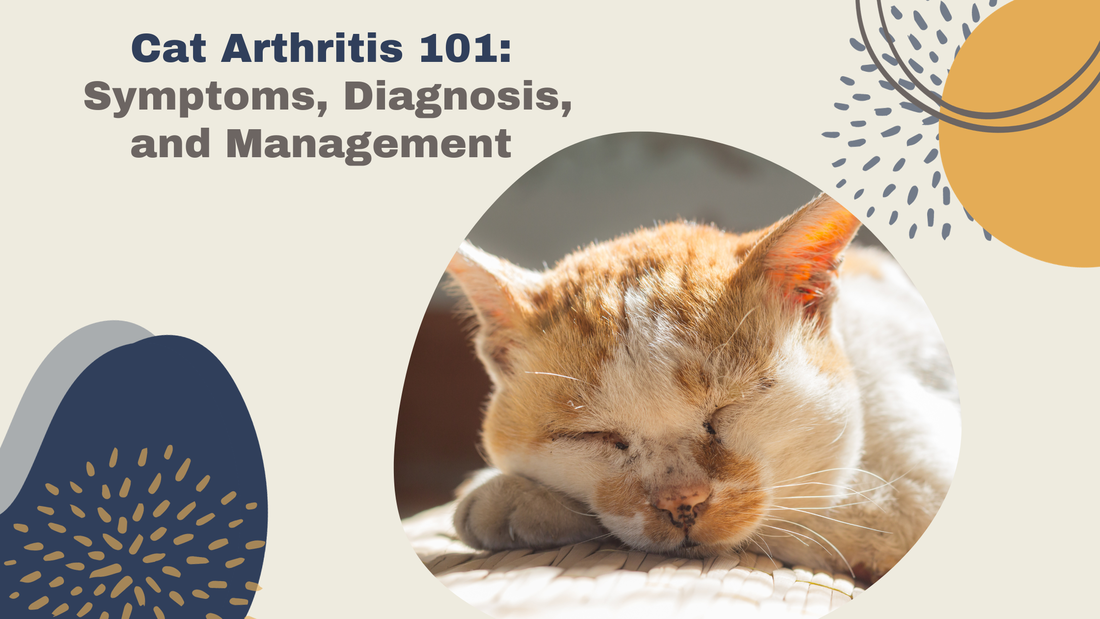

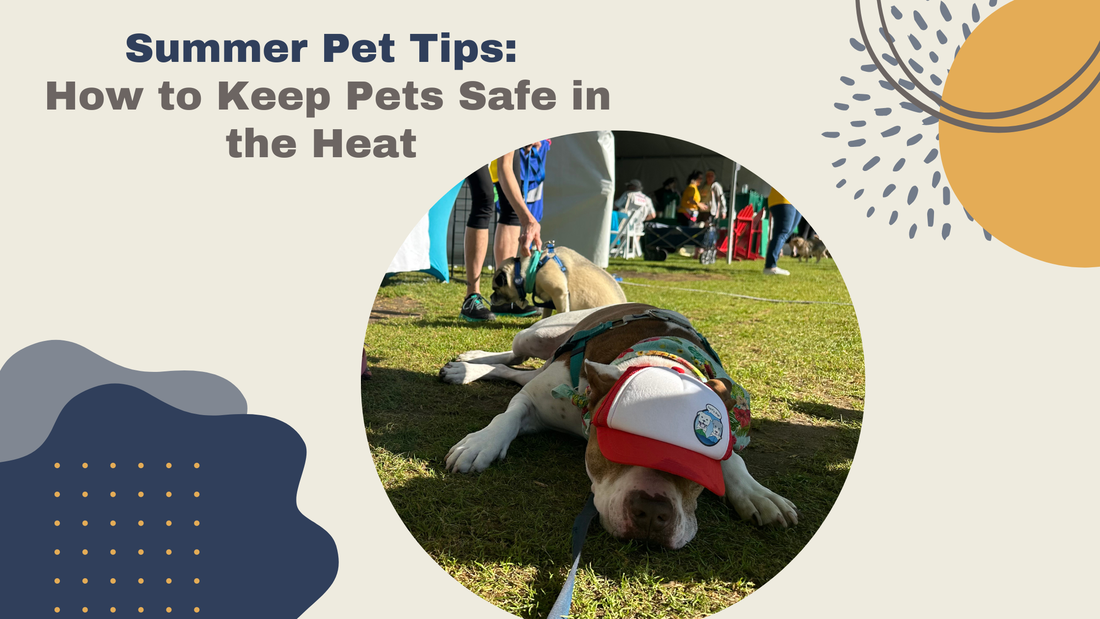

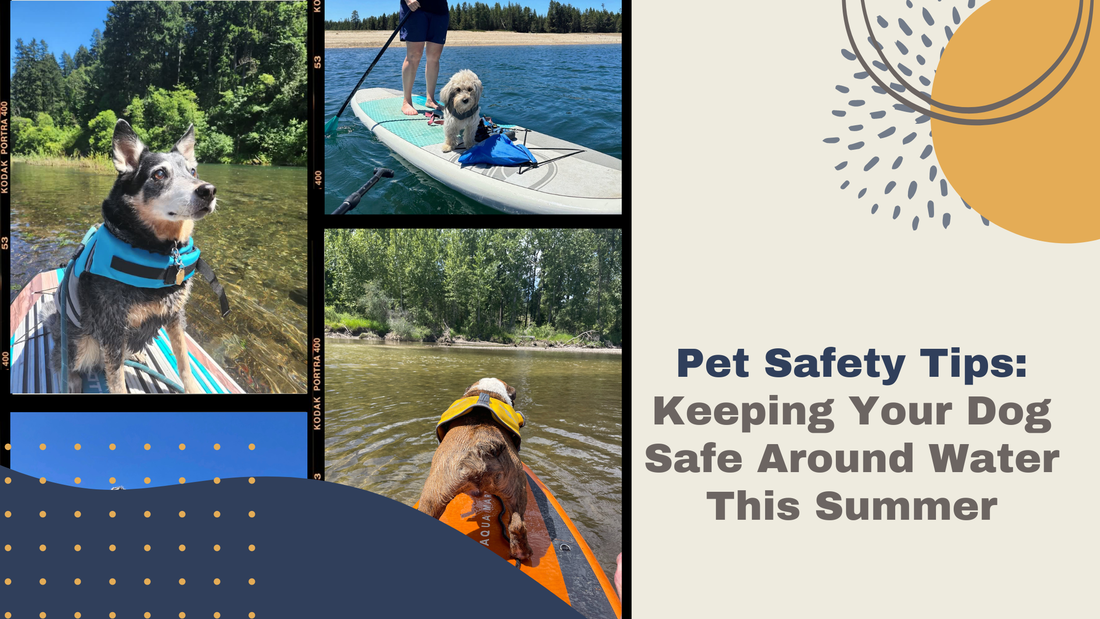

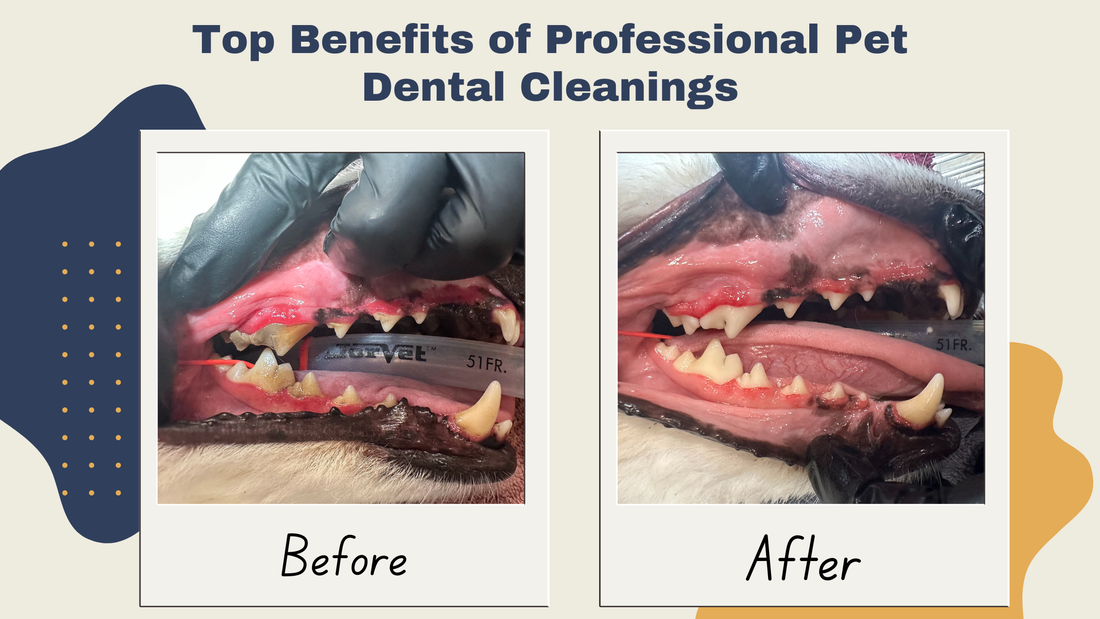
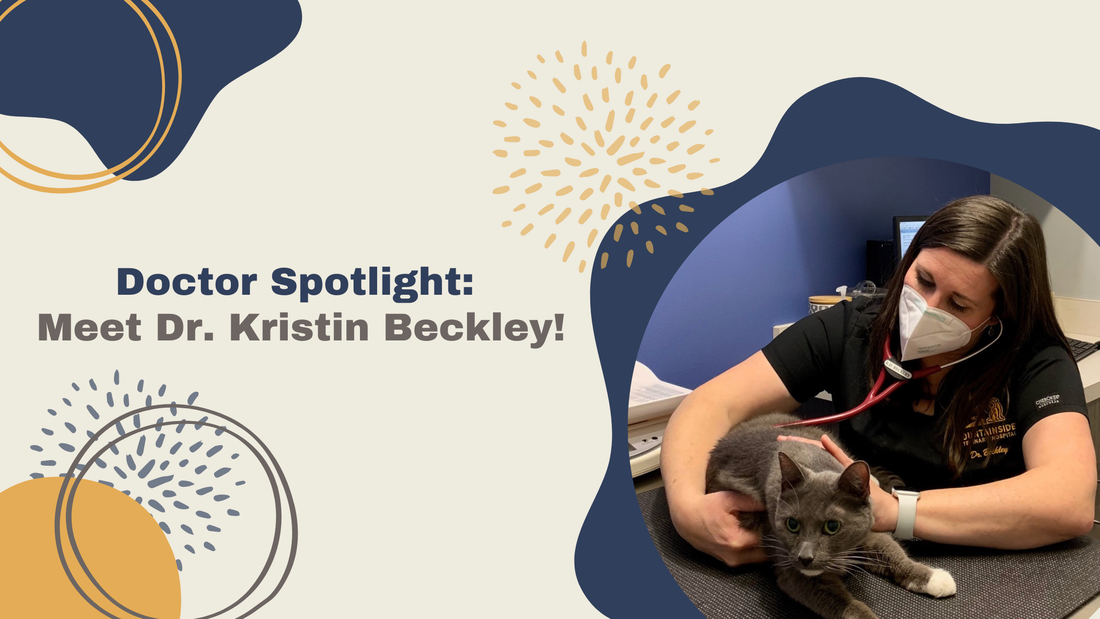
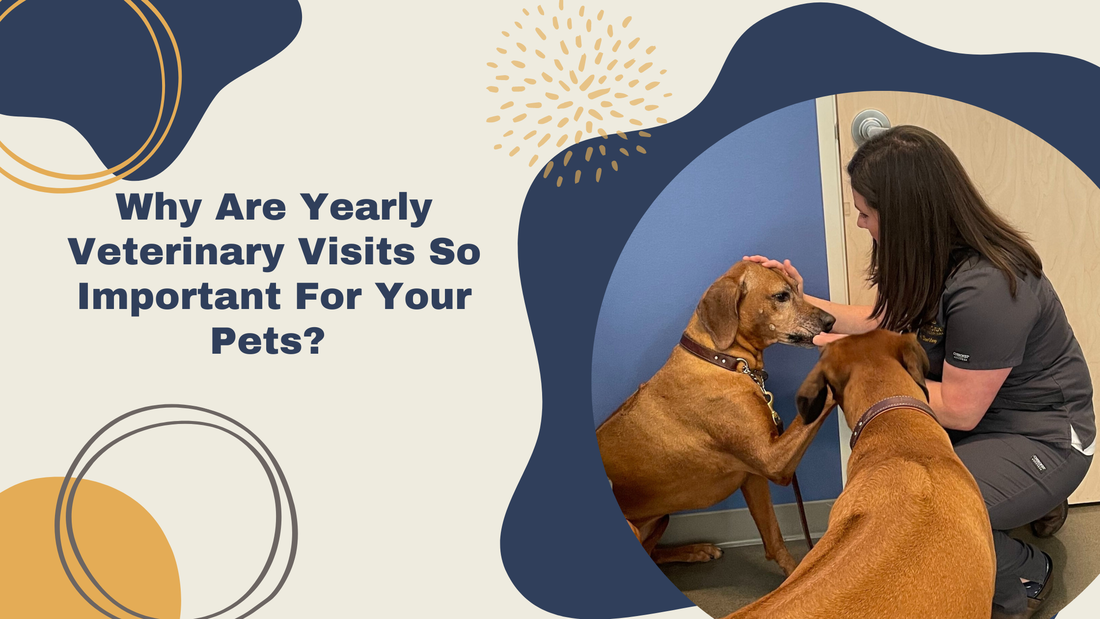
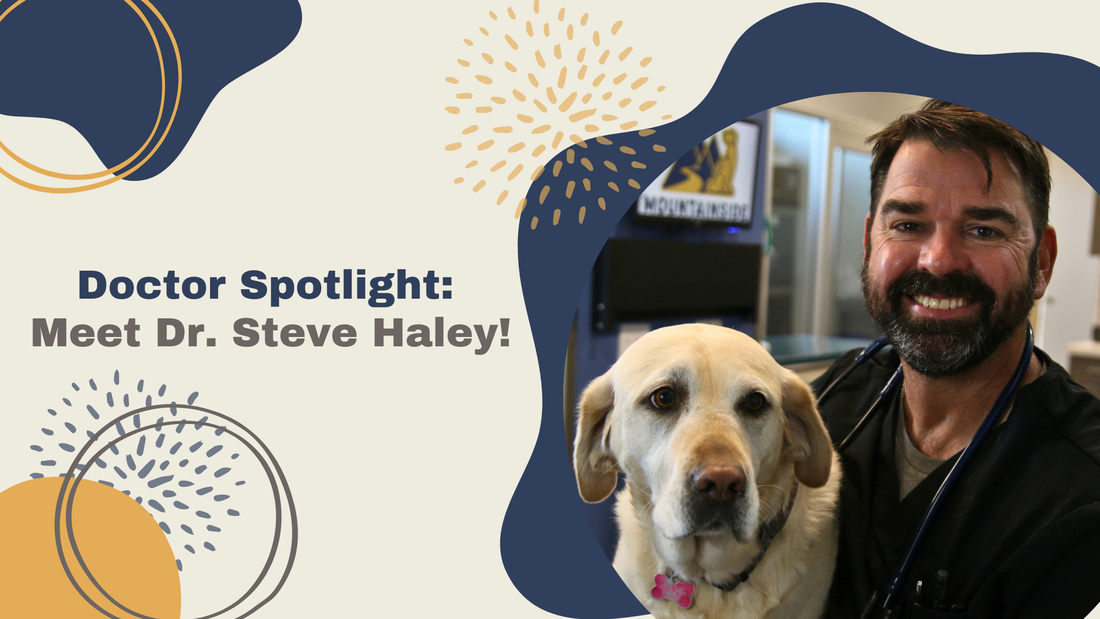
 RSS Feed
RSS Feed
